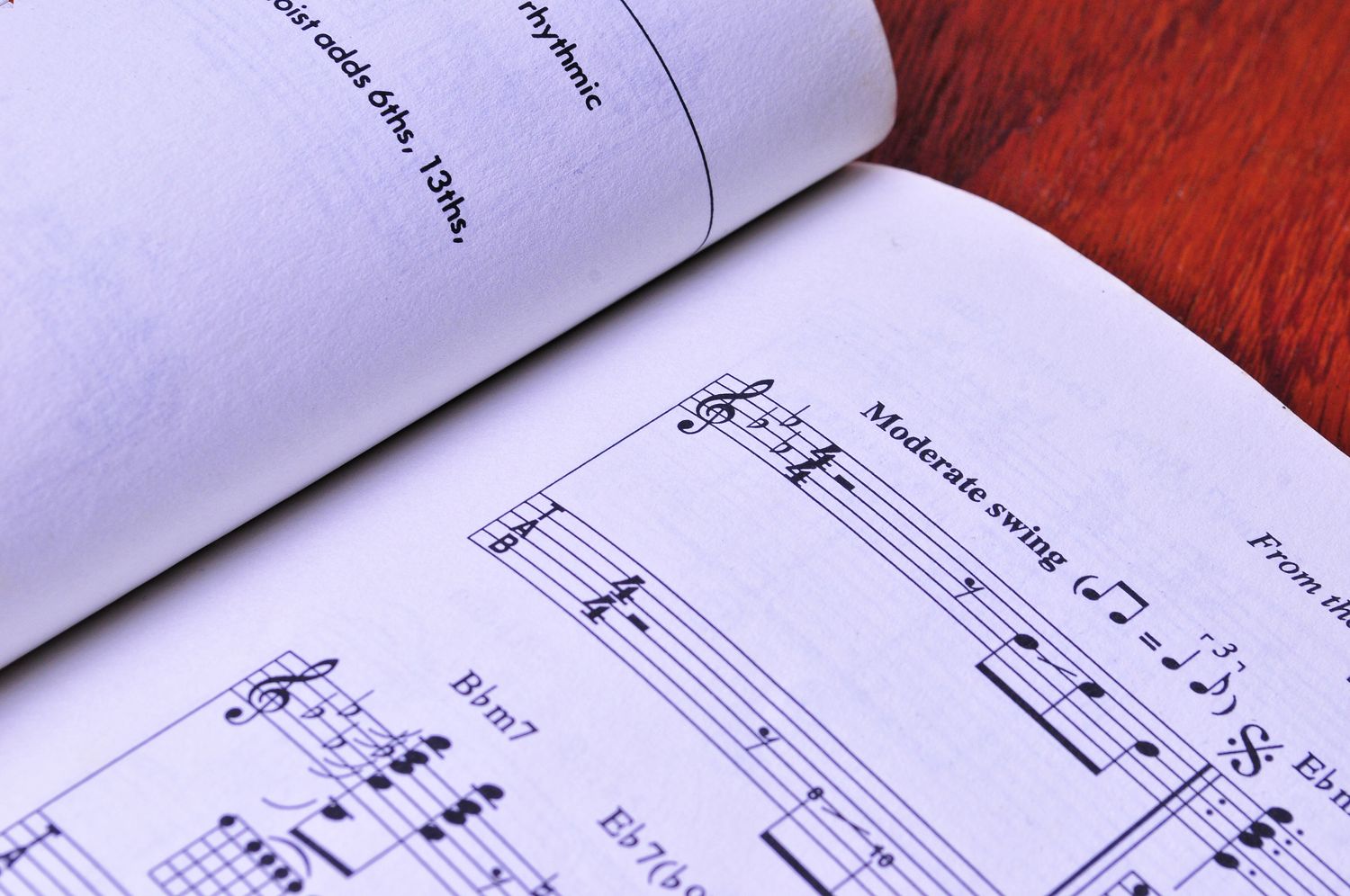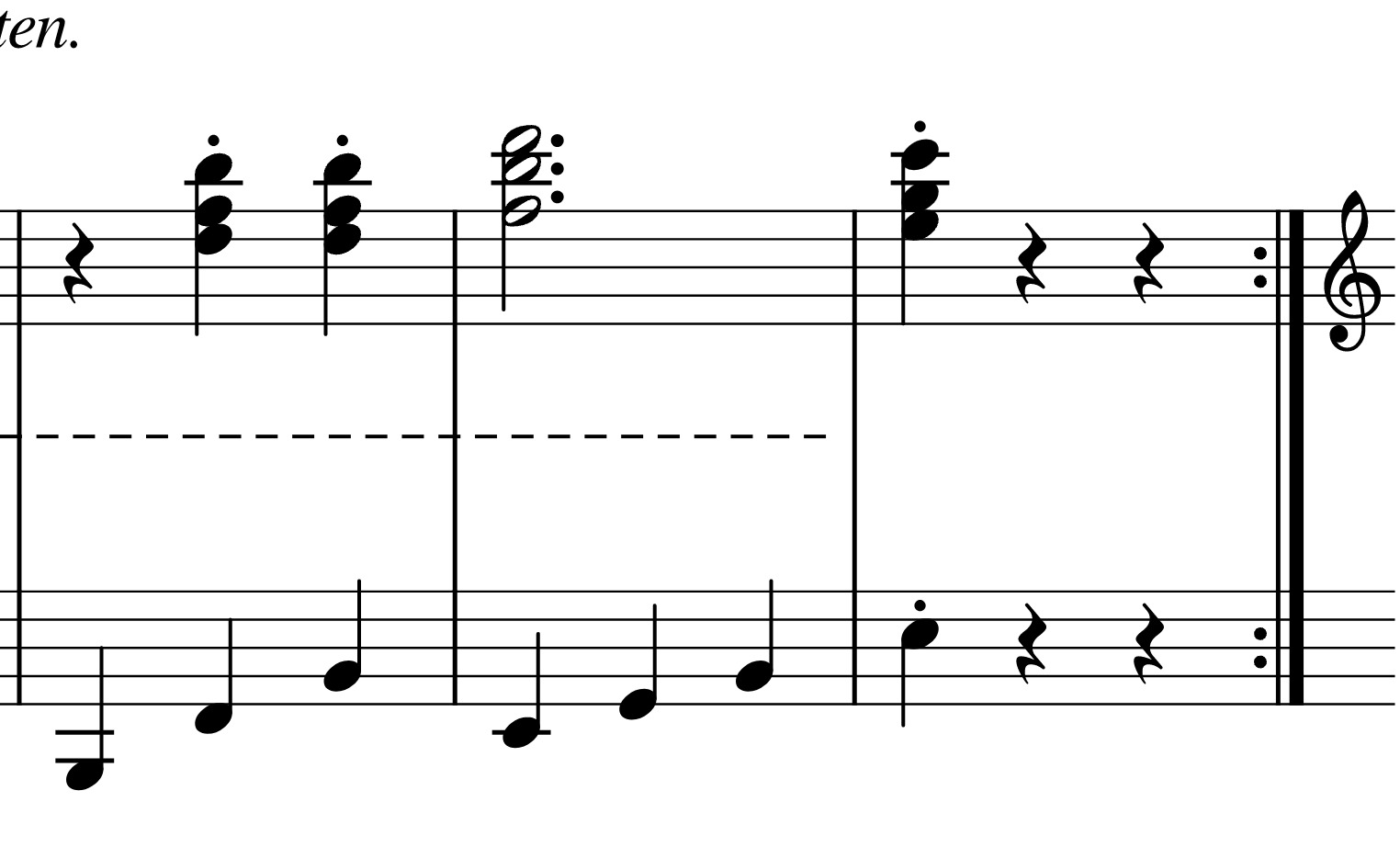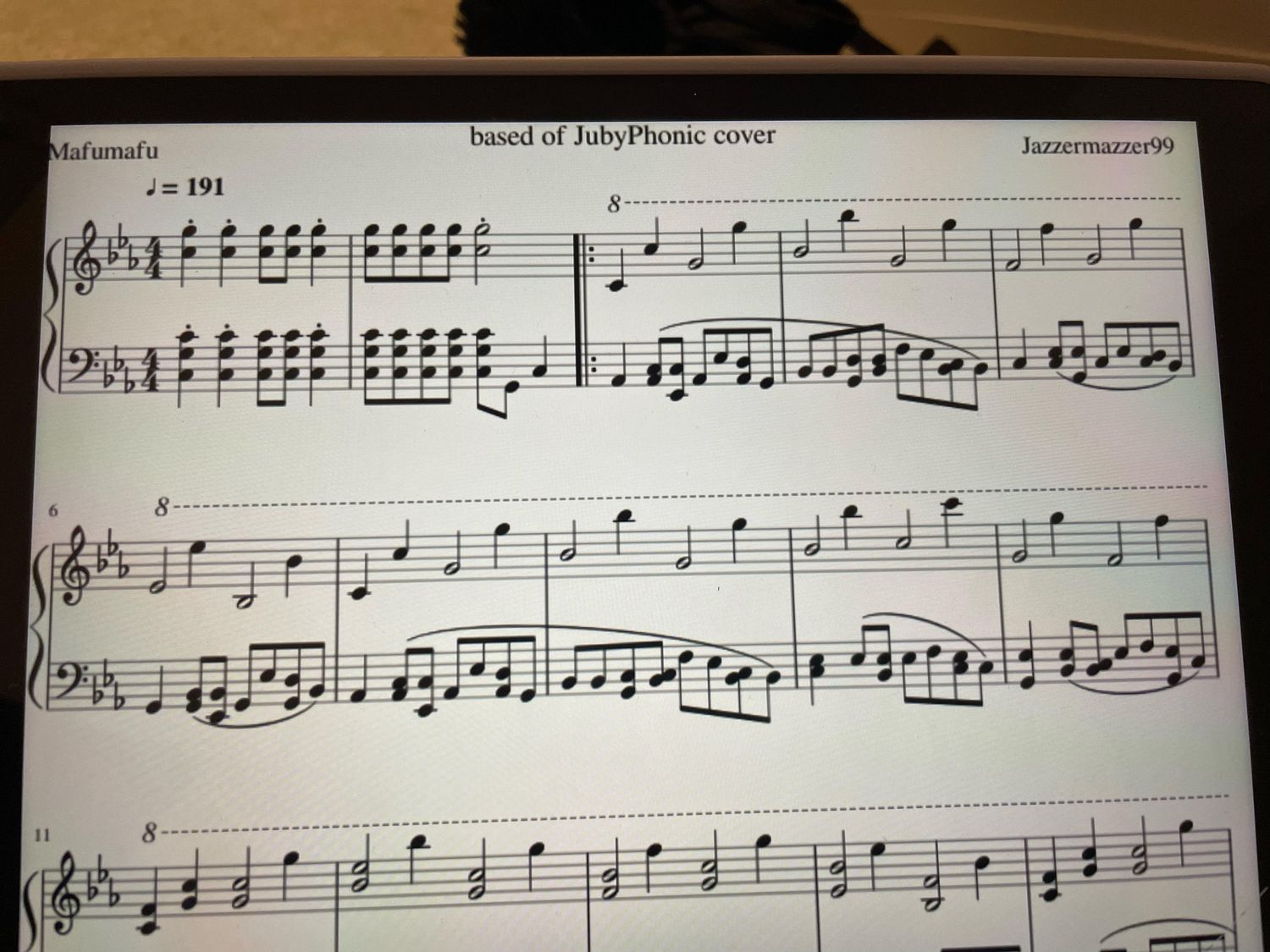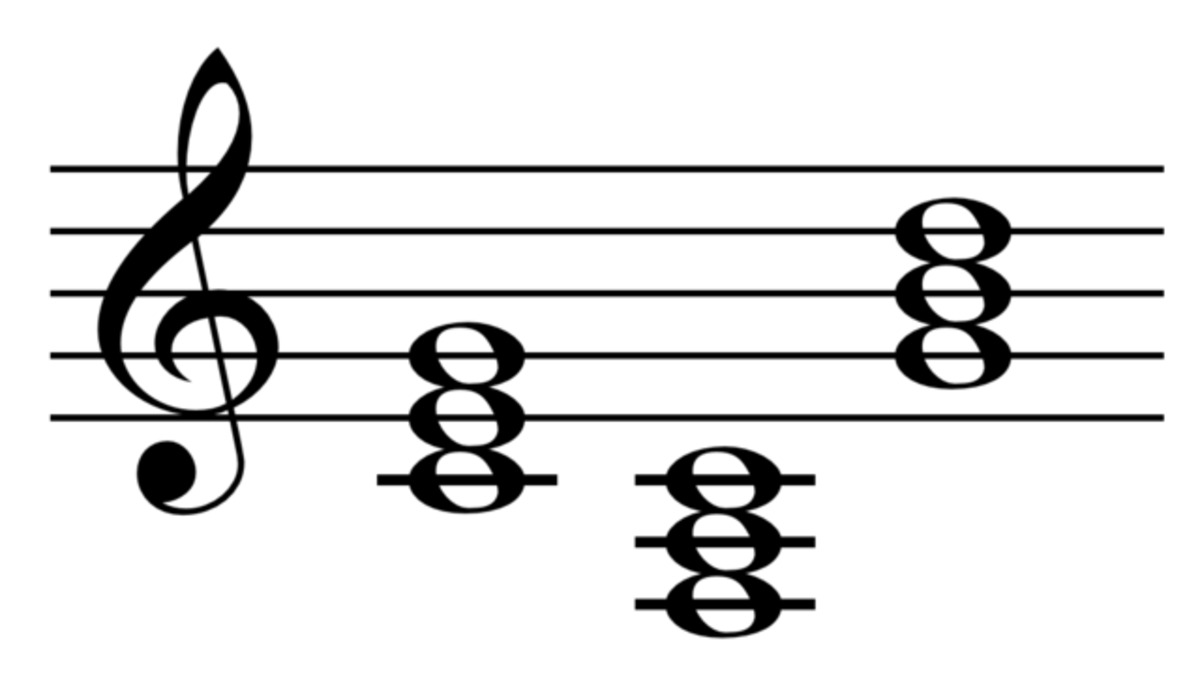Home>Production & Technology>Music Theory>What Are Modes In Music Theory


Music Theory
What Are Modes In Music Theory
Published: January 29, 2024
Discover the concept of modes in music theory and how they contribute to the understanding of musical composition. Enhance your knowledge of music theory through this comprehensive guide.
(Many of the links in this article redirect to a specific reviewed product. Your purchase of these products through affiliate links helps to generate commission for AudioLover.com, at no extra cost. Learn more)
Table of Contents
Introduction
Music theory is a fascinating subject that delves into the intricacies of how music is constructed and organized. One key concept in music theory is the notion of modes. Understanding modes is crucial for musicians and composers as they provide a framework for creating unique melodies, harmonies, and emotional expressions within a musical composition.
Simply put, modes are different scales derived from the major and minor scales. Each mode has its own distinct set of intervals, or distances between notes, that give it a specific sound and character. By using different modes, musicians can explore a wide range of tonalities and evoke different moods in their music.
In this article, we will explore the various modes in music theory, with a focus on the major and minor modes and their respective variations. We will delve into each mode’s unique characteristics, discussing their tonalities, emotional qualities, and common usage in different musical genres. By the end, you will have a comprehensive understanding of modes and how they can be applied in your musical endeavors.
Definition of Modes
In music theory, modes are a set of scales derived from the major and minor scales. They offer a different way of organizing and utilizing the notes within an octave. Each mode has its own distinct pattern of whole and half steps, which results in a unique tonal quality and emotional character.
While the major and minor scales consist of seven different notes, each mode uses these same seven notes but rearranges them to emphasize a different starting point or root note. This alteration of the starting point within the scale creates a new tonality and changes the overall sound of the mode.
There are various modes in music theory, but the most common ones are the major and minor modes:
- Major Modes: The major modes are derived from the major scale, also known as the Ionian mode. They are characterized by their bright and happy sound. The major modes include the Ionian, Lydian, and Mixolydian modes.
- Minor Modes: The minor modes are derived from the natural minor scale, also known as the Aeolian mode. They have a more melancholic and introspective quality. The minor modes include the Dorian, Phrygian, and Locrian modes.
Each mode within the major and minor categories has its own unique flavor, giving musicians a palette of tonalities to work with. This diversity allows for varying emotional expressions in compositions, helping to convey specific moods or evoke particular feelings.
Major Mode
The major mode, also known as the Ionian mode, is one of the most widely used and familiar modes in music. It is directly derived from the major scale, which is often associated with feelings of happiness, brightness, and optimism.
The major mode follows a specific pattern of whole and half steps, resulting in a specific sequence of intervals. The interval pattern for the major mode is: whole, whole, half, whole, whole, whole, half. This gives it a distinct and recognizable sound that resonates with listeners.
When composing or playing in the major mode, musicians often have the freedom to explore various melodies and harmonies within the tonality. It is widely used across different musical genres, from classical to pop, and it forms the foundation for countless songs and compositions.
The Ionian mode, or major mode, is known for its uplifting and joyful qualities. It is often associated with celebrations, happy moments, and a sense of triumph. Many popular songs are written in the major key, utilizing the major mode to convey a sense of positivity and elation.
One of the key features of the major mode is its stability and resolution. The major triad, which consists of the root, third, and fifth notes of the scale, forms a stable and harmonically pleasing chord in the major mode. This chord provides a sense of closure and satisfaction when used at the end of a musical phrase or progression.
Overall, the major mode is a fundamental and versatile mode in music theory. Its bright and cheerful sound makes it a go-to choice for composers and musicians looking to evoke feelings of happiness and optimism in their music.
Ionian Mode
The Ionian mode, also known as the major mode, is the first mode derived from the major scale. It is a widely used and popular mode in music, known for its bright and uplifting sound.
The Ionian mode follows a specific pattern of whole and half steps, resulting in a unique sequence of intervals. The interval pattern for the Ionian mode is: whole, whole, half, whole, whole, whole, half. This pattern gives it a distinct and recognizable tonality.
The Ionian mode is characterized by its major third interval, which contributes to its overall sense of happiness and optimism. It is often associated with feelings of joy, celebration, and triumph. Many popular songs are written in the Ionian mode, as it provides a sense of positivity and catchiness.
One of the key aspects of the Ionian mode is its stability and resolution. The major triad, which consists of the root note, the major third, and the perfect fifth, forms a harmonically pleasant and satisfying chord. This chord is often used as a resolution point and provides a sense of closure in musical phrases and progressions.
The Ionian mode is widely utilized in various genres of music, including pop, rock, classical, and jazz. It serves as the foundation for countless melodies, harmonies, and chord progressions. Musicians often explore different variations and rhythmic patterns within the Ionian mode to create catchy and memorable compositions.
Overall, the Ionian mode is a fundamental and versatile mode in music theory. Its bright and joyful sound evokes a sense of positivity and is widely embraced by composers and musicians to convey feelings of happiness and optimism in their music.
Dorian Mode
The Dorian mode is an intriguing and versatile musical mode that is derived from the natural minor scale. It has a distinct and unique sound that sets it apart from other modes.
The Dorian mode follows a specific pattern of whole and half steps, resulting in a unique sequence of intervals. The interval pattern for the Dorian mode is: whole, half, whole, whole, whole, half, whole. This pattern creates a minor tonality with a raised sixth note, which gives the Dorian mode its characteristic flavor.
The Dorian mode is often described as moody, soulful, and mysterious. It has a melancholic quality that resonates with listeners. Many iconic melodies and compositions across different genres utilize the Dorian mode to evoke a sense of introspection and depth.
One of the defining characteristics of the Dorian mode is its minor third interval. This interval contributes to its overall minor tonality and adds an element of tension and emotion. The raised sixth note distinguishes it from the natural minor scale and creates a distinctive melodic color.
The Dorian mode is commonly used in jazz, blues, and rock music, where its unique flavor adds richness and complexity to melodic lines and improvisation. It works well over minor chords and can create a modal interchange when used in combination with other modes and scales.
Composers and musicians often explore different melodic variations within the Dorian mode to create evocative and expressive music. Its versatility allows for both melancholic and soulful melodies, as well as more uplifting and energetic progressions.
Overall, the Dorian mode offers a captivating tonality that captivates listeners with its emotional depth. Its moody and mysterious qualities make it a powerful tool in the hands of musicians and composers, providing them with a unique avenue for artistic expression.
Phrygian Mode
The Phrygian mode is an intriguing and exotic musical mode that is derived from the natural minor scale. It has a unique and distinct sound that adds a touch of mystery and tension to compositions.
The Phrygian mode follows a specific pattern of whole and half steps, resulting in a unique sequence of intervals. The interval pattern for the Phrygian mode is: half, whole, whole, whole, half, whole, whole. This pattern creates a minor tonality with a lowered second note, which gives the Phrygian mode its characteristic flavor.
The Phrygian mode is often described as dark, exotic, and intense. It has a haunting quality that can evoke a sense of drama and passion in music. Many compositions in various genres, such as flamenco, progressive rock, and metal, utilize the Phrygian mode to create a distinct and captivating atmosphere.
One of the defining characteristics of the Phrygian mode is its flat second interval. This interval contributes to its overall minor tonality and adds a unique dissonance and tension. The lowered second note distinguishes it from other modes, creating an exotic and mysterious quality.
The Phrygian mode is commonly used in music that aims to create a sense of intensity and emotional depth. It works well over minor chords and can add a dramatic and passionate flair to melodies and harmonies. Musicians often experiment with the Phrygian mode to create evocative and provocative musical expressions.
Composers and guitarists, in particular, have explored the Phrygian mode due to its association with flamenco music. Flamenco guitarists often utilize the Phrygian mode’s distinctive tonality to create fiery and passionate guitar solos.
Overall, the Phrygian mode offers a captivating and exotic tonality that adds depth and intensity to musical compositions. Its dark and mysterious qualities make it a powerful tool for musicians and composers looking to create music that is dramatic, suspenseful, and emotionally charged.
Lydian Mode
The Lydian mode is a fascinating and vibrant musical mode that is derived from the major scale. It has a distinct and uplifting sound that adds a touch of brightness and wonder to compositions.
The Lydian mode follows a specific pattern of whole and half steps, resulting in a unique sequence of intervals. The interval pattern for the Lydian mode is: whole, whole, whole, half, whole, whole, half. This pattern creates a major tonality with a raised fourth note, which gives the Lydian mode its characteristic flavor.
The Lydian mode is often described as dreamy, ethereal, and majestic. It has a bright and uplifting quality that can evoke a sense of wonder and awe. Many compositions in various genres, such as jazz, film scores, and progressive rock, utilize the Lydian mode to create a sense of beauty and grandeur.
One of the defining characteristics of the Lydian mode is its raised fourth interval. This interval contributes to its overall major tonality and adds a unique sense of brightness and openness. The raised fourth note distinguishes it from other modes and creates an expansive and enchanting quality.
The Lydian mode is commonly used in music that aims to create a sense of soaring melodies and expansive soundscapes. It works well over major chords and can add a sense of magical and otherworldly atmosphere to melodies and harmonies. Musicians often experiment with the Lydian mode to create captivating and uplifting musical expressions.
The Lydian mode has also been embraced by many guitarists for its association with guitar virtuosos and shredders. The mode’s bright and dazzling tonality lends itself well to fast and intricate guitar solos.
Overall, the Lydian mode offers a captivating and euphoric tonality that adds a sense of wonder and beauty to musical compositions. Its dreamy and majestic qualities make it a powerful tool for musicians and composers looking to create music that is enchanting, awe-inspiring, and emotionally uplifting.
Mixolydian Mode
The Mixolydian mode is a captivating and versatile musical mode that is derived from the major scale. It has a distinct and spirited sound that adds a touch of energy and flavor to compositions.
The Mixolydian mode follows a specific pattern of whole and half steps, resulting in a unique sequence of intervals. The interval pattern for the Mixolydian mode is: whole, whole, half, whole, whole, half, whole. This pattern creates a major tonality with a lowered seventh note, which gives the Mixolydian mode its characteristic flavor.
The Mixolydian mode is often described as bluesy, groovy, and funky. It has a unique quality that can evoke a sense of excitement and movement. Many compositions in various genres, such as blues, rock, and jazz, utilize the Mixolydian mode to create a sense of groove and rhythmic drive.
One of the defining characteristics of the Mixolydian mode is its lowered seventh interval. This interval contributes to its overall major tonality with a bluesy twist. The lowered seventh note distinguishes it from other modes and adds a soulful and slightly tense quality.
The Mixolydian mode is commonly used in music that aims to create a sense of rhythm and forward motion. It works well over dominant chords and can add a sense of funkiness and playfulness to melodies and harmonies. Musicians often experiment with the Mixolydian mode to create catchy and energetic musical expressions.
The mode is beloved by guitarists and is often associated with iconic guitar solos and riff-based music. The Mixolydian mode’s groovy and bluesy tonality allows guitarists to infuse their playing with a sense of soul and improvisational freedom.
Overall, the Mixolydian mode offers a captivating and dynamic tonality that adds energy and flavor to musical compositions. Its bluesy and groovy qualities make it a powerful tool for musicians and composers looking to create music that is lively, rhythmic, and emotionally engaging.
Minor Mode
The minor mode is a fundamental concept in music theory, providing a tonal framework with a distinct emotional quality. It is derived from the natural minor scale, also known as the Aeolian mode. The minor mode is widely used across various musical genres and offers a wide range of expressive possibilities.
Compared to the major mode, the minor mode has a more melancholic, introspective, and sometimes mysterious character. It is often associated with feelings of sadness, longing, and depth. The minor mode can evoke a sense of vulnerability and convey a wide range of emotions, from sorrow to passion.
The minor mode follows a specific pattern of whole and half steps, resulting in a unique sequence of intervals. The interval pattern for the minor mode is: whole, half, whole, whole, half, whole, whole. This pattern creates a minor tonality that distinguishes it from the major mode.
Within the minor mode, there are different variations, each with its own unique qualities and characteristics. The most commonly used variations are the natural minor, harmonic minor, and melodic minor.
The natural minor scale, or the Aeolian mode, forms the foundation of the minor mode. It has a traditional minor sound with a flatted third, sixth, and seventh scale degree. The natural minor scale is often used in haunting and melancholic compositions.
The harmonic minor scale adds a raised seventh note to the natural minor scale, creating a more dramatic and tense sound. This alteration allows for stronger leading tones and creates a dominant-tonic harmonic dynamic in the minor mode.
The melodic minor scale is slightly different in its ascending and descending forms. When ascending, it raises both the sixth and seventh scale degrees, giving a brighter and more uplifting quality. When descending, it follows the natural minor scale pattern.
The minor mode offers a rich and expressive palette for composing and performing music. It is widely used in various genres, such as classical, jazz, blues, and metal, to convey a wide range of emotions and moods.
Overall, the minor mode provides a powerful tool for musicians and composers to explore a more introspective and emotionally evocative realm. Its melancholic and passionate qualities allow for deeply expressive musical expressions and connect with listeners on a profound level.
Aeolian Mode
The Aeolian mode, also known as the natural minor scale, is a fundamental component of the minor mode. It forms the foundation for creating melancholic and introspective compositions in music.
The Aeolian mode follows a specific pattern of whole and half steps, resulting in a unique sequence of intervals. The interval pattern for the Aeolian mode is: whole, half, whole, whole, half, whole, whole. This sequence of intervals creates a minor tonality with a distinct and somber sound.
The Aeolian mode is often associated with feelings of sadness, longing, and depth. It conveys a sense of vulnerability and has a melancholic quality that resonates with listeners. Many beautiful and haunting melodies across various genres are composed using the Aeolian mode.
One of the key features of the Aeolian mode is its flatted third, sixth, and seventh notes when compared to the major scale. These alterations contribute to its minor tonality and add an element of darkness and introspection. The flatted third, in particular, is a defining characteristic of the Aeolian mode and creates a mournful and expressive quality.
The Aeolian mode is widely used in classical, jazz, blues, and other genres that rely on emotive and soulful music. It serves as a powerful tool for expressing a wide range of emotions and tapping into the depths of human experiences.
Composers and musicians often explore different melodic variations within the Aeolian mode to convey their desired emotions and create compelling musical expressions. The Aeolian mode allows for poignant and evocative melodic lines, providing a canvas for artists to paint their musical narratives.
It is worth noting that the Aeolian mode is one of the most commonly used variants of the minor mode. Its haunting and introspective quality makes it a go-to choice for composers seeking to convey a sense of melancholy, reflection, and emotional depth.
Overall, the Aeolian mode, with its mournful and introspective tonality, is an indispensable component of the minor mode. Its ability to evoke deep emotions and connect with listeners on a profound level makes it an invaluable tool in the hands of musicians and composers.
Locrian Mode
The Locrian mode is an intriguing and unique musical mode that is derived from the major scale. It has a distinct and dissonant sound that sets it apart from other modes.
The Locrian mode follows a specific pattern of whole and half steps, resulting in a unique sequence of intervals. The interval pattern for the Locrian mode is: half, whole, whole, half, whole, whole, whole. This pattern creates a diminished tonality with a lowered second, third, fifth, and sixth note, which gives the Locrian mode its characteristic flavor.
The Locrian mode is often described as dark, unstable, and mysterious. It has a dissonant quality that can evoke a sense of tension and unease. Due to its inherent instability, the Locrian mode is rarely used as a standalone tonality in compositions.
One of the defining characteristics of the Locrian mode is its diminished fifth interval, also known as the tritone. This interval contributes to its overall dissonant and unstable tonality. The diminished fifth is responsible for the distinct and unsettling sound of the Locrian mode.
The Locrian mode is less commonly used in comparison to other modes due to its inherent instability. However, it can be effectively employed to create musical tension or as a passing tonality in more adventurous compositions, particularly in genres such as jazz and avant-garde music.
Composers and musicians often experiment with the Locrian mode to create avant-garde and dissonant musical expressions. Its unique tonality allows for unconventional harmonies and melodies that can challenge traditional musical conventions.
It’s important to note that the Locrian mode is not commonly found in traditional tonal music. Its dissonant nature often clashes with the traditional harmonic principles. However, its distinct sound can provide a refreshing departure from traditional tonalities and add a touch of experimentation and unconventionality to compositions.
Overall, the Locrian mode offers a captivating and unconventional tonality that can add a sense of dissonance and tension to compositions. While it may not be as commonly utilized as other modes, its distinct sound allows for creative exploration and pushing the boundaries of musical expression.
Conclusion
Modes are an essential aspect of music theory, providing musicians and composers with a diverse palette of tonalities and emotional expressions to work with. The major and minor modes form the foundation of this concept, each offering a distinct set of tonal characteristics.
The major mode, also known as the Ionian mode, has a bright and uplifting quality. It is associated with happiness, joy, and triumph. The major mode is widely used across various genres and is commonly heard in popular music.
The minor mode, derived from the natural minor scale or Aeolian mode, has a more melancholic and introspective quality. It conveys a range of emotions, from sadness to passion, and is often associated with emotional depth and vulnerability.
Within each major and minor mode, there are different variations that further expand the tonal possibilities. The Lydian mode adds brightness and wonder, the Dorian mode brings a moody and soulful quality, the Phrygian mode adds an exotic and intense flavor, and the Mixolydian mode introduces a groovy and bluesy tonality.
The Locrian mode, although less commonly used, offers a unique and dissonant sound that can be employed for experimental and avant-garde musical expressions.
Understanding modes in music theory unlocks a world of creative possibilities for musicians and composers. By leveraging the different tonalities and emotional qualities of each mode, they can evoke specific moods, convey profound emotions, and explore a wide range of musical genres and styles.
Whether creating catchy and uplifting melodies in the major modes or delving into introspective and passionate compositions in the minor modes, modes serve as a powerful tool for musical expression and storytelling.
As you embark on your musical journey, embrace the diverse world of modes, experiment with their unique characteristics, and let their captivating tonalities take your compositions to new heights.











